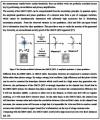
An Introduction to Quantum Computing for Non-Physicists
by Eleanor G. Rieffel, Wolfgang Polak
Publisher: arXiv 2000
Number of pages: 45
Description:
The aim of this paper is to guide computer scientists and other non-physicists through the conceptual and notational barriers that separate quantum computing from conventional computing. We introduce basic principles of quantum mechanics to explain where the power of quantum computers comes from and why it is difficult to harness. We describe quantum cryptography, teleportation, and dense coding.
Download or read it online for free here:
Download link
(350KB, PDF)
Similar books
 Brief Primer on the Fundaments of Quantum Computing
Brief Primer on the Fundaments of Quantum Computingby Richard L Amoroso - viXra.org
From the table of contents: From Concept to Conundrum; Cornucopia of Quantum Logic Gates; Surmounting Uncertainty Supervening Decoherence; Measurement With Certainty; New Classes of Quantum Algorithms; References; and more ...
(6503 views)
 A brief introduction of quantum cryptography for engineers
A brief introduction of quantum cryptography for engineersby Bing Qi, Li Qian, Hoi-Kwong Lo - arXiv
We present the principles behind quantum key distribution and discuss a few well-known QKD protocols. We focus more on the implementation of QKD protocols rather than security analysis. Another topic covered here is the security of QKD systems.
(13949 views)
 Handbook of Quantum Information
Handbook of Quantum Information- Quantiki
An encyclopedia of everything quantum. Sections: Mathematical Structure; Quantum States; Evolution and Operations; Entanglement; Quantum Information Theory; Quantum Discord; Quantum Communication; Quantum Cryptography; Quantum Computation; etc.
(9955 views)
 Quantum Computing Since Democritus
Quantum Computing Since Democritusby Scott Aaronson - University of Waterloo
We'll start out with various scientific problems that predate quantum computing: for example, the measurement problem, P versus NP, the existence of secure cryptography, the Humean problem of induction, or the possibility of closed timelike curves.
(8535 views)